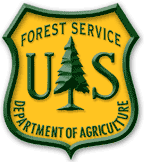 Flagstaff AZ (July 8, 2021) – Burned Area Emergency Response (BAER) specialists recently completed their data gathering and analysis for the Backbone burned area to produce a soil burned severity map. This map and data display categories of unburned/low, moderate and high. Approximately 63% of the 41,924 acres are either unburned and/or low soil burn severity, while 35% sustained a moderate soil burn severity and only about 2% identified as high soil burn severity.
Flagstaff AZ (July 8, 2021) – Burned Area Emergency Response (BAER) specialists recently completed their data gathering and analysis for the Backbone burned area to produce a soil burned severity map. This map and data display categories of unburned/low, moderate and high. Approximately 63% of the 41,924 acres are either unburned and/or low soil burn severity, while 35% sustained a moderate soil burn severity and only about 2% identified as high soil burn severity.
The low category of soil burn severity indicate that there was only partial consumption of fine fuels and litter coverage remains relatively intact on the soil surface. Residence time at the soil surface was short, leaving root systems and structure undamaged. Recovery time in the low category will vary based on ecological community but is expected to recovery in the short-term.
A moderate category of soil burn severity indicates consumption of litter and fine fuels at the soil surface. In forested communities, the heat from moderate severity fire will result in water repellant conditions at the mineral soil surface. The canopy in the forest is browning and it is expected that trees will drop needles and leaves that can provide some litter cover at the soil surface. In these systems, recovery can take longer for tree species to reestablish.
The moderate soil burn severity category in lower elevation communities indicates complete consumption of shrub cover that can but does not necessarily result in water repellant conditions at the soil surface. Several shrub species in the lower elevation communities do resprout after fire and recovery time will be variable. Moderate soil burn severity category in the lower elevation shrub communities that did not express water repellant behavior can still result in a runoff potential category of high as a result of the soils inherent qualities and the removal of effective vegetative cover.
A high soil burn severity category is the result of higher intensity fire behavior or longer residence time at the soil surface. This category is found in forested or dense woodland communities and the litter and fuels, including an overstory canopy, was consumed. The soil structure is weakened, roots are charred and water repellant soil conditions persist through the upper horizon of mineral soil. Recovery time in the conifer systems can be significant.
The Backbone BAER assessment team used initial remote sensing imagery with its field validated soils data, to develop and produce a map showing soil burn severity levels for the burned areas within both wildfires. The BAER team and the US Geological Survey (USGS) both used the soil burn severity map as an analysis tool to estimate post fire flows and debris flow probability.
The BAER team relied on its refined soil burn severity map to produce data used in its subsequent modeling and determination of post fire runoff and sedimentation. In specific areas that experienced moderate to high burn severity, there could be increased runoff from steep hillslopes and resultant increases in post-fire soil erosion and potential debris flows.
The Backbone soil burn severity map can be downloaded via the “Maps” tab of the “Backbone Post-Fire BAER” InciWeb page as a JPEG or PDF file.
SPECIAL NOTE: Everyone near and downstream from the burned areas should remain alert and stay updated on weather conditions that may result in heavy rains over the burn scars. Flash flooding may occur quickly during heavy rain events–be prepared to take action. Current weather and emergency notifications can be found at the National Weather Service website.
Backbone Post-Fire BAER Assessment information is available at: https://inciweb.nwcg.gov/




